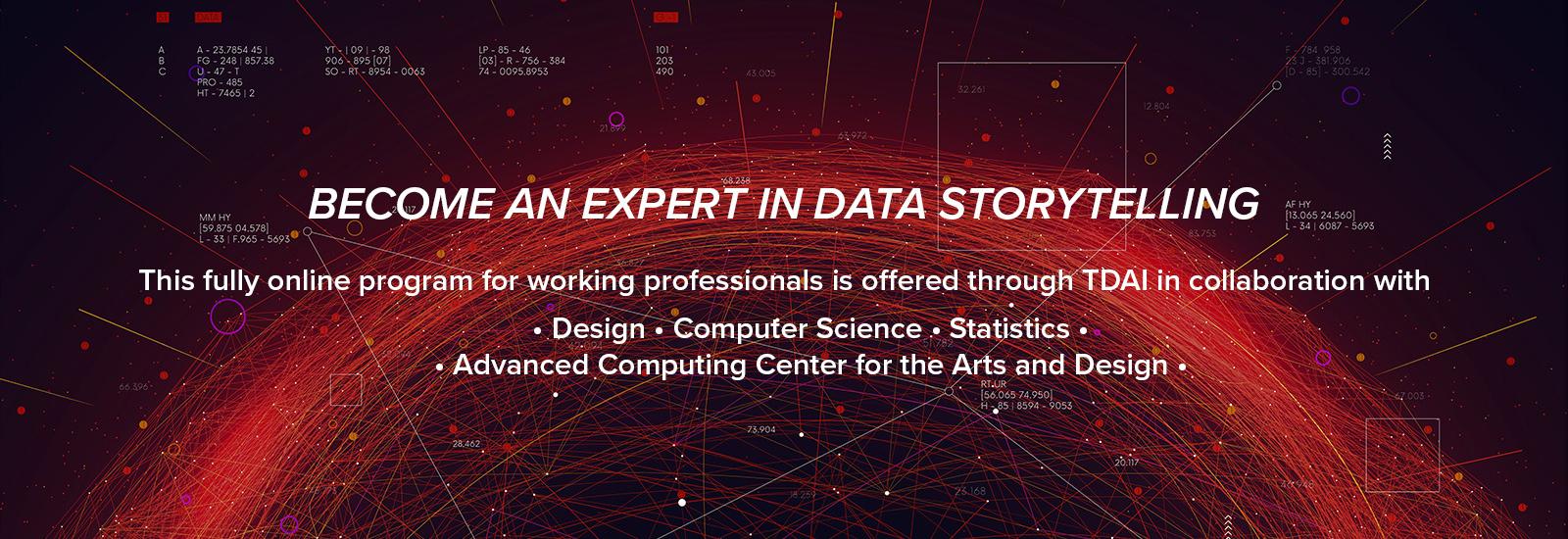The Masters in Translational Data Analytics combines design thinking, computer science, and statistics into a truly interdisciplinary program
Applications for Autumn 2025 are open.
Early Decision Deadline: 2/1/2025
Final Application Deadline 6/1/2025
Translational Data Analytics
“Translational” is often used in the clinical sciences and refers to acting as a bridge between “bench” research and the patient’s bedside. In the context of data analytics, “translational” means that you will not only be able to perform specialized analytics, but you will be able to translate this technical information into accessible and understandable data stories which people can easily understand.
No Significant Experience Required
Individuals from diverse fields such as healthcare, education, finance, the government, or the arts bring their unique backgrounds to data science. No significant programming or statistical background is required.
Design Thinking and Experiential Learning
Apply concepts presented in the program to real-world problems. Using a design-thinking lens, you will develop full-cycle workflows for data analytics projects. OSU’s team of experts will be there to support your progress.
Program Flexibility
Flexibility is key for busy working professionals. We offer fully online courses in both asynchronous and synchronous format to blend flexibility with time with our team of experts. The program can be completed in as little as 21 months with options to take more time if needed.

